For this week’s lab homework, we were asked to create a simple application using digital or analog input and digital output. Since we were working on analog input in class, and already worked on button press input, I was interested in getting some more detailed input besides on or off.
I wanted to do a little “LED Meter” that could visually measure analog values. This way, I could plug in different kinds of sensors and immediately see feedback on if they were working or not.
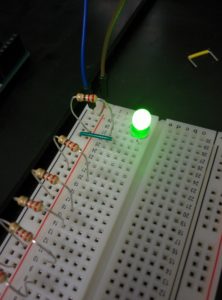
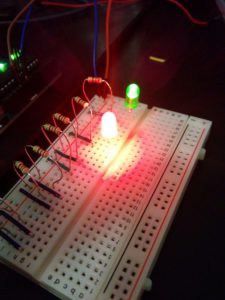
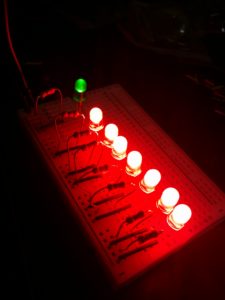
LEDs! More LEDs! More more more!!!
I populated my breadboard with 8 LEDs, with the 8th and final LED being green. This would represent hitting the ‘top’ value.
Then I added a potentiometer with a knob to control the lights:
Yes, yes, I know my hand is in the way. I definitely had some issues with ‘jittery’ values. After playing around with the jumper wire, I developed a strong sense of superstition and paranoia about how I was touching my piece. Bumps and jostles seemed to produce ‘floating inputs’ as described in class:
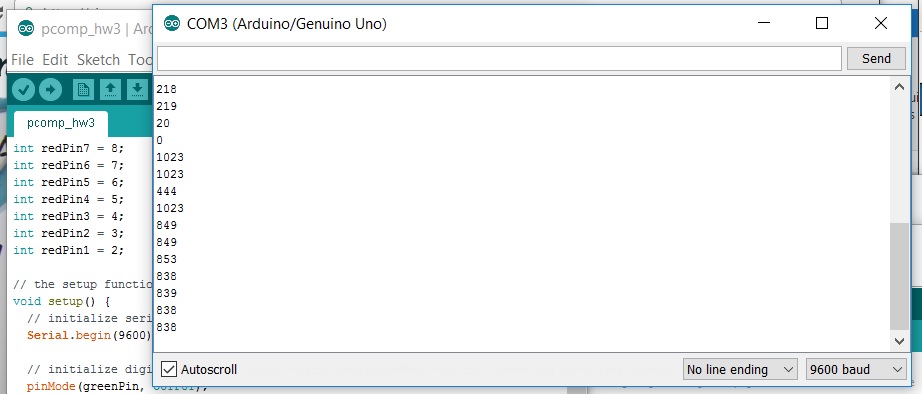
0? 1023? 404? Back to 1023? Not what we want.
I wanted to move on and play around with a force sensitive resistor that is laid out like a strip. I changed up the code for the lights to more clearly depict a ‘position’ within the interaction paradigm. More or less pretty fun interaction as I had imagined it:
However, it seemed like my noisy, floating input issues were even worse while trying to set this up. From what I gathered, it didn’t seem like an issue with the circuit plan, but implementation.
At first I went with alligator clips to clip onto the FSR leads, clips to wire, wire to bread board. It worked ok… until I slightly nudged it and it all went to hell. Then I decided to use some special male to female jumper wire I bought a while ago. Which definitely seemed to help, but not all the way. Still needed to implement a sophisticated solution to reduce movement. That is to say, cover everything with tape.
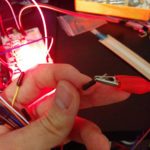
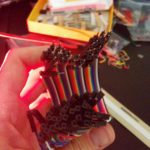
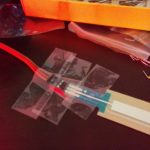
After all of that, though for the most part better, I was still having issues with jumpy input. I managed to refine my code to exclude some of the lower, less reliable values. But I definitely will be asking in class about ways to securely connect sensors that don’t easily plug directly into the bread board. I was going to have a little more fun with this one, but the fragility of the system prevented me from moving the arduino/breadboard/sensor system around as needed.
Let’s talk about ways to make reliable connections and please bring the set up to class or office hours so we can make sure nothing else is going on! There are some topics on how to smooth out signal as well but let’s see if making better connections already fixes the issues.